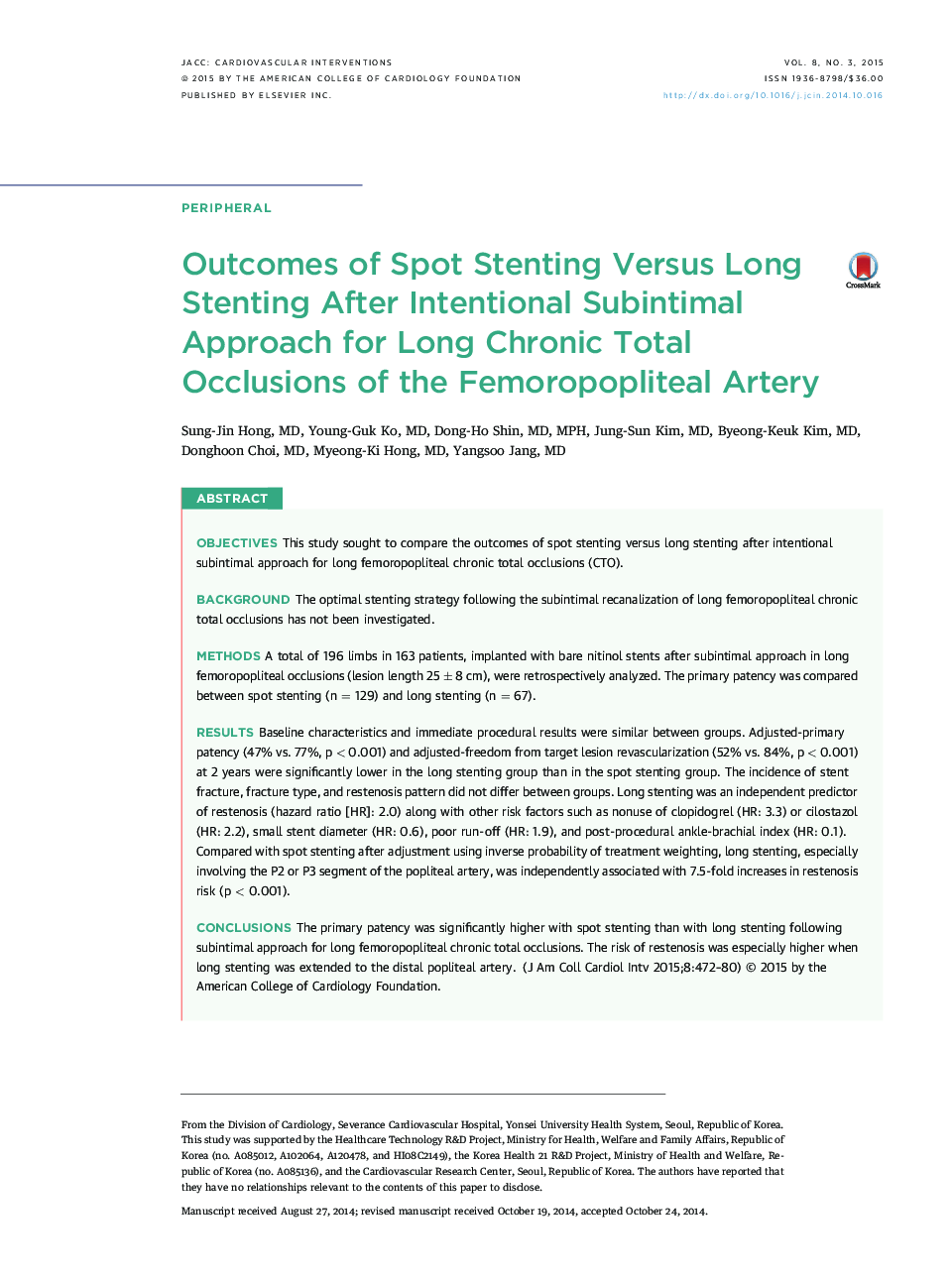| کد مقاله | کد نشریه | سال انتشار | مقاله انگلیسی | نسخه تمام متن |
|---|---|---|---|---|
| 5980739 | 1177013 | 2015 | 9 صفحه PDF | دانلود رایگان |

ObjectivesThis study sought to compare the outcomes of spot stenting versus long stenting after intentional subintimal approach for long femoropopliteal chronic total occlusions (CTO).BackgroundThe optimal stenting strategy following the subintimal recanalization of long femoropopliteal chronic total occlusions has not been investigated.MethodsA total of 196 limbs in 163 patients, implanted with bare nitinol stents after subintimal approach in long femoropopliteal occlusions (lesion length 25 ± 8 cm), were retrospectively analyzed. The primary patency was compared between spot stenting (n = 129) and long stenting (n = 67).ResultsBaseline characteristics and immediate procedural results were similar between groups. Adjusted-primary patency (47% vs. 77%, p < 0.001) and adjusted-freedom from target lesion revascularization (52% vs. 84%, p < 0.001) at 2 years were significantly lower in the long stenting group than in the spot stenting group. The incidence of stent fracture, fracture type, and restenosis pattern did not differ between groups. Long stenting was an independent predictor of restenosis (hazard ratio [HR]: 2.0) along with other risk factors such as nonuse of clopidogrel (HR: 3.3) or cilostazol (HR: 2.2), small stent diameter (HR: 0.6), poor run-off (HR: 1.9), and post-procedural ankle-brachial index (HR: 0.1). Compared with spot stenting after adjustment using inverse probability of treatment weighting, long stenting, especially involving the P2 or P3 segment of the popliteal artery, was independently associated with 7.5-fold increases in restenosis risk (p < 0.001).ConclusionsThe primary patency was significantly higher with spot stenting than with long stenting following subintimal approach for long femoropopliteal chronic total occlusions. The risk of restenosis was especially higher when long stenting was extended to the distal popliteal artery.
Journal: JACC: Cardiovascular Interventions - Volume 8, Issue 3, March 2015, Pages 472-480